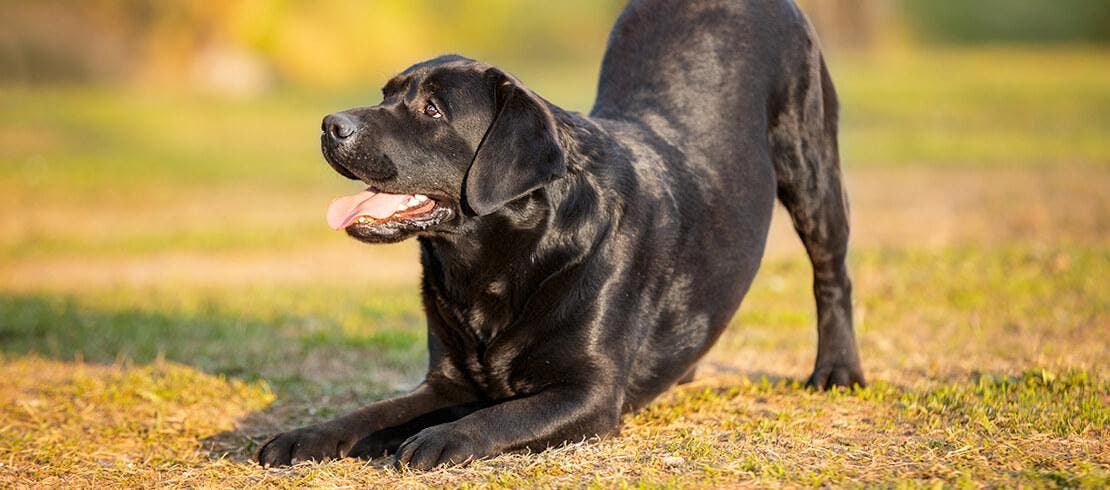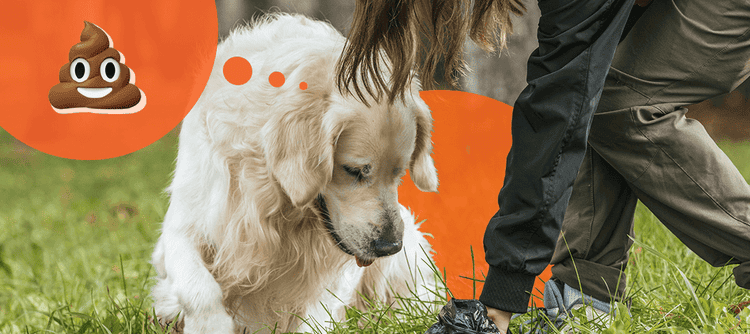Do you know what your dog’s body language means?
Dogs use their eyes, ears, tail and other parts of their bodies to communicate how they feel about people, places and situations. Your dog’s body language can tell you a lot about how they’re feeling.
Understanding your dog’s body language is an important part of communicating with them — especially if your dog’s behavior or body language suddenly changes from indicating that they’re happy to nervous or fearful. Here are body language signs to look out for, and what they might mean.
Dog Body Language Guide
Happy and Relaxed
- Posture: Relaxed, not tense in any way
- Mouth: Slightly open, not showing teeth
- Eyes: Normal shape and size, not dilated or showing the whites
- Ears: Relaxed and in their normal position
- Tail: In the air or wagging in a slow, wide pattern
Upset or Nervous
- Posture: Frozen or tense, possibly hunched over or showing their stomach
- Mouth: Closed or excessively yawning, possibly drooling or licking their lips
- Eyes: Dilated or showing more of the whites than usual; possibly squinting
- Ears: Hung low or pulled back
- Tail: Fast wagging or held low between their legs
Fearful or Aggressive
- Posture: Frozen or tense; the hair may stand up on their back
- Mouth: Baring their teeth, particularly the canines; snapping and/or snarling
- Eyes: Dilated and staring intently
- Ears: Pulled back or raised, pricked
- Tail: Fast wagging or tail between their legs; the tail may also be wagging quickly and in a tight pattern
How to Tell If Your Dog Is Happy and Relaxed
A relaxed dog will not appear tense in any way. Look for these indicators that your dog is feeling happy and content:
- Mouth is slightly open: A relaxed dog’s mouth will be slightly open without showing any teeth.
- Ears are facing forward: When a dog is relaxed, their ears will be positioned forward or tilted slightly to the side.
- Tail is held high or wagging: If your dog’s tail is high in the air, they likely feel confident or excited. Of course, a wagging tail is usually a good sign, too. If their tail is wagging in a wide, slower-paced pattern, your dog is probably feeling happy and content.

How to Tell If Your Dog Is Upset or Nervous
Sometimes a dog’s behavior or body language may signal that something is not quite right with their situation. But how can you tell if your dog is sad, nervous or angry? Below you’ll find some of the most common signs dogs exhibit and what they usually mean,
- Body freezing: A dog will often freeze while they assess a situation and decide whether they need to run or fight.
- Hunched over or making their body appear small: Your dog likely feels scared or submissive. A dog will sometimes behave like this around a more dominant dog.
- Eyes appear larger than normal: A dog’s eyes can appear large when they feel either threatened or aggressive.
- Squinting: Dogs who don’t feel well can look as though they’re squinting their eyes.
- Ears pulled back: If your dog’s ears are pulled back only slightly, they’re probably just being friendly. But if their ears are completely flattened or sticking straight out from the sides of their head, they are likely feeling frightened or submissive.
- Yawning: Of course, yawning can just mean your dog is tired. But if a dog is yawning a lot, it may also mean they’re stressed or nervous, as dogs sometimes yawn to calm down.
- Lip licking, tongue flicking, drooling: Many dogs lick their lips, flick their tongues or drool fairly often for other reasons, but if your dog is doing any of these more frequently, it could be a sign of stress.
- Mouth closed: When a dog’s mouth is closed, this is a sign they’re alert.
How to Tell If a Dog Is Fearful or Aggressive
Pay close attention if either your dog or another dog shows signs of fear or aggression. Try to quickly remove your dog from situations that trigger this response. You may also need to consult a trainer if your dog frequently shows aggressive behaviors.
- Ears raised or pricked: Raised or pricked ears usually mean that your dog is alert and ready for action. They will direct their ears toward whatever is holding their interest. This can also be a sign of aggression.
- Low tail or tail between the legs: Your dog may be uncomfortable, nervous or fearful.
- Fast-wagging tail: If your dog is wagging their tail quickly and has a defensive body posture or is barking a lot, they may be overly excited or frustrated. Use caution when approaching.
- Standing up tall/making their body appear larger: This is a sign of assertiveness or aggression.
- Teeth bared or snarling: Bared teeth or snarling are typically a dog’s way of telling you or another animal not to come any closer. A dog signaling their intention to act aggressively will often retract their lips to bare their teeth, while also wrinkling the top of their snout.
- Snapping or nipping: This is a clear warning to back away, and usually means the dog feels threatened. Snapping and nipping are also quite common puppy behaviors, but you should teach your puppy not to bite at an early age.
- Biting and holding: These actions demonstrate an intent to harm and can be a sign of an attacking or ferocious dog. Consult with your vet or a professional dog trainer if your dog exhibits this behavior.
These body language cues can help you and your dog stay safe during interactions with new dogs. Learning how your dog normally behaves and reacts to situations will help you identify when they feel at ease, fearful or nervous — giving you another way to communicate with your pet.











